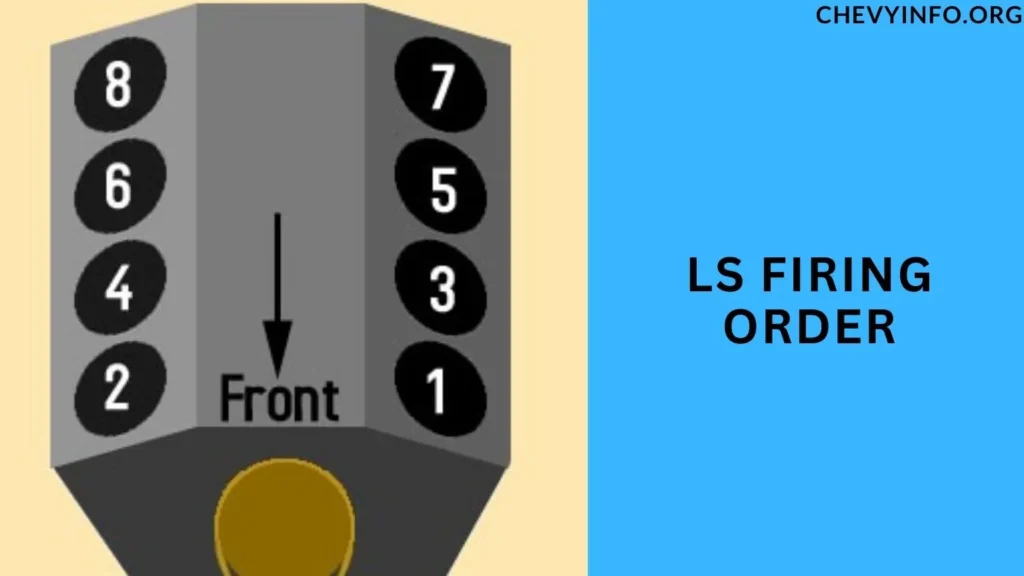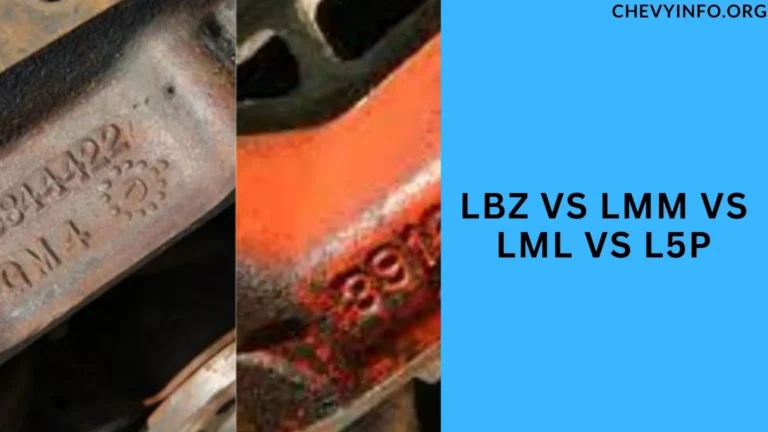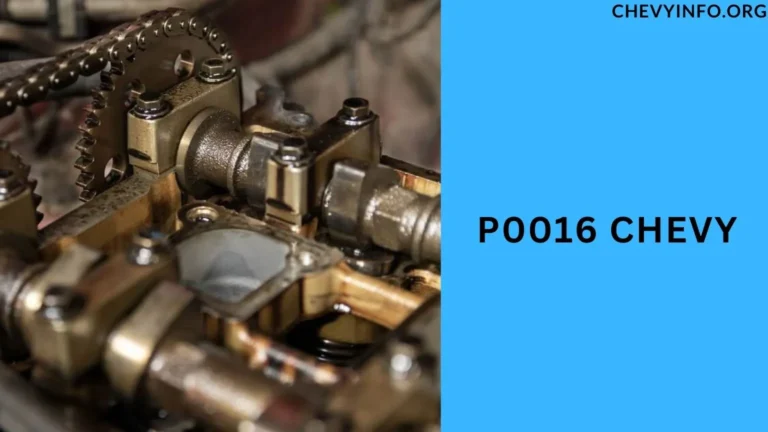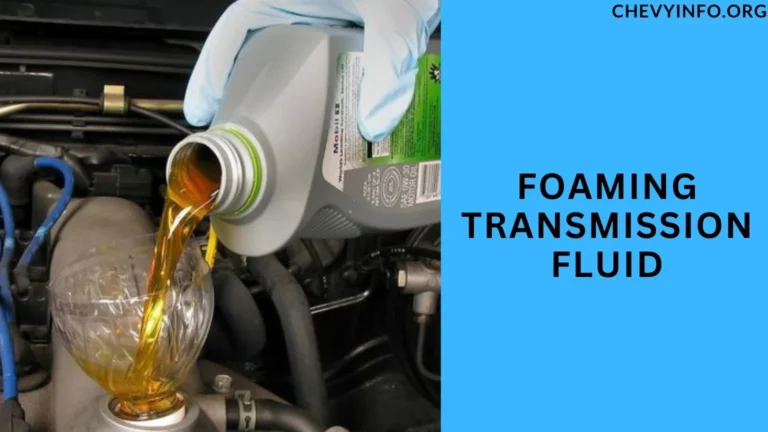LS Firing Order Engine (Explained) of 2024
Engines are complex machines with precise mechanisms governing their functions. Among these crucial mechanisms is the firing order, a sequence determining the ignition of cylinders in an engine.
In the realm of high-performance engines, the LS firing order has garnered significant attention for its unique characteristics and impact on engine performance.

Understanding Engine Firing Order
Before delving into the specifics of firing order LS, it’s essential to grasp the concept of engine firing order itself.
The firing order refers to the sequence in which the spark plugs in an engine ignite the air-fuel mixture in the cylinders.
This sequence is critical for maintaining engine balance, smooth operation, and optimal power output.
What is an LS Engine?
LS engines, manufactured by General Motors, have gained renown for their performance capabilities and versatility.
These engines are commonly found in a range of vehicles, from sports cars to trucks, owing to their robust design and power delivery.
LS Firing Order Explained
The firing order LS is a fundamental aspect of engine design, particularly in high-performance engines like those found in many General Motors vehicles.
Unlike traditional V8 engines, which typically follow a firing order sequence of 1-8-4-3-6-5-7-2, LS engines feature a unique firing order of 1-8-7-2-6-5-4-3.
Understanding this firing order is essential for optimizing engine performance and efficiency.
The firing order refers to the sequence in which the engine’s cylinders receive a spark and ignite the air-fuel mixture.
In the case of the firing order LS, this sequence is carefully engineered to achieve several key objectives:
Improved Balance
The firing order of LS is designed to enhance engine balance by ensuring that cylinders fire in a specific sequence. This balanced firing pattern reduces vibrations and contributes to smoother engine operation.
Optimized Power Delivery
By strategically arranging the firing order, LS engines can achieve optimal power delivery across the cylinders.
This can result in improved throttle response, better torque distribution, and overall enhanced performance.
Reduced Cross-Firing
Cross-firing occurs when adjacent cylinders ignite too closely together, leading to inefficient combustion and potential engine issues.
The firing order LS minimizes the risk of cross-firing, promoting efficient combustion and maximizing power output.
Enhanced Engine Dynamics
The unique firing order of LS engines influences engine dynamics such as crankshaft rotation and piston movement. These factors play a crucial role in engine efficiency and performance.
Compatibility with Engine Components
The firing order LS is designed to work seamlessly with other engine components, including camshafts, fuel delivery systems, and ignition systems. This compatibility ensures optimal performance and reliability.
Benefits of Firing Order LS

The firing order offers several advantages:
- Enhanced engine balance
- Reduced vibration levels
- Improved throttle response
- Better power distribution across cylinders
Common Myths and Misconceptions
Myths and misconceptions surrounding firing order LS can lead to confusion and misinformation among automotive enthusiasts.
Let’s debunk some common myths and clarify misconceptions about firing order LS:
Myth: Firing Order is the Same as Other Engines
Contrary to popular belief, the firing order of LS engines differs significantly from that of traditional V8 engines.
This unique sequence contributes to the distinct performance characteristics of LS powerplants.
Myth: Changing Firing Order Improves Performance
While modifying the firing order may seem tempting for performance enthusiasts, it’s crucial to note that altering the factory-set firing order of LS engines can lead to detrimental effects on engine operation, including decreased efficiency and increased wear.
Factors Impacting Firing Order Modification
When considering firing order modifications, factors such as engine configuration, camshaft design, and intended usage must be carefully evaluated.
Any alterations should be undertaken with caution and expert guidance to avoid potential drawbacks.
Case Studies: Performance Impact of Firing Order Adjustments
Several case studies have explored the effects of firing order adjustments on LS engine performance. These studies highlight the nuanced relationship between firing order, engine dynamics, and overall power output.
Tips for Optimizing Firing Order LS

For enthusiasts seeking to optimize LS engine performance, adhering to the factory-specified firing order and focusing on complementary upgrades such as camshaft tuning,
fuel delivery optimization, and ignition system enhancements can yield significant improvements without compromising reliability.
Here are some tips to consider when optimizing the firing order LS:
Adhere to Manufacturer Specifications
Start by understanding and adhering to the factory-specified firing order for your specific LS engine model.
Deviating from this recommended sequence can lead to compatibility issues and potential performance drawbacks.
Focus on Complementary Upgrades
In addition to optimizing the firing order, consider complementary upgrades that can further enhance engine performance.
This includes upgrades such as performance camshafts, fuel delivery optimization, ignition system enhancements, and airflow improvements.
Consult with Experts
Seek guidance from experienced automotive technicians or engine tuning specialists when modifying the firing order.
These experts can provide valuable insights, ensure compatibility with other engine components, and help avoid potential pitfalls.
Balance Performance and Reliability
While optimizing the firing order can boost performance, it’s crucial to strike a balance between performance gains and engine reliability.
Avoid overly aggressive modifications that could compromise engine longevity or lead to excessive wear and tear.
Consider Engine Tuning
Engine tuning plays a significant role in maximizing the benefits of an optimized firing order. Adjustments to fuel delivery, ignition timing, air intake, and exhaust systems can work synergistically with the firing order to unleash the full potential of your LS engine.
Monitor Performance Metrics
After optimizing the firing order and implementing related upgrades, monitor key performance metrics such as engine temperature, fuel efficiency, power output, and exhaust emissions.
This monitoring helps ensure that the modifications are delivering the desired results without compromising engine health.
Regular Maintenance
Maintain regular servicing and maintenance schedules for your LS engine, including oil changes, filter replacements, and inspections.
Well-maintained engines perform optimally and are better equipped to handle performance enhancements.
Dyno Testing
Consider dyno testing your LS engine after optimizing the firing order and implementing upgrades.
Dyno testing provides real-world performance data and allows for fine-tuning adjustments to achieve optimal results.
People also ask
Why is the firing order LS different?
The firing order LS differs from traditional V8 engines primarily to improve engine balance, reduce vibrations, and optimize power delivery.
This unique sequence, such as 1-8-7-2-6-5-4-3 in LS engines, is carefully engineered to enhance overall engine performance and efficiency.
What is the firing order of the 6.0 L Chevy?
The firing order of the 6.0 L Chevy engine is 1-8-7-2-6-5-4-3.
How are LS cylinders numbered?
LS cylinders are typically numbered starting from the front of the engine, with the passenger side being odd-numbered cylinders (1, 3, 5, 7) and the driver’s side being even-numbered cylinders (2, 4, 6, 8).
What is the 4/7 firing order swap?
The 4/7 firing order swap refers to a modification where the firing order of cylinders 4 and 7 is swapped in a V8 engine.
This alteration is sometimes done in LS engines to improve exhaust scavenging and enhance performance characteristics, particularly in high-performance applications.
Conclusion
In Conclusion, The LS firing order stands as a testament to precision engineering and performance optimization in modern engines.
Understanding its significance and adhering to best practices for engine tuning and modification can unlock the full potential of LS powerplants while ensuring longevity and reliability.

Henry Worner, a seasoned automotive expert with over 13 years of experience in car repair, maintenance, and performance enhancement, ChevyInfo.org was born out of a passion for Chevrolet vehicles. Henry’s deep-rooted love for everything Chevy has driven him to create a platform where fellow enthusiasts, car owners, and anyone interested in Chevy cars can find valuable insights, tips, and guidance.






